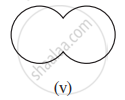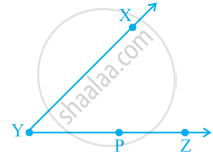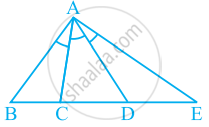Advertisements
Advertisements
प्रश्न
Which of the following is not true for a parallelogram?
पर्याय
Opposite sides are equal
Opposite angles are equal
Opposite angles are bisected by the diagonals
Diagonals bisect each other
उत्तर
Opposite angles are bisected by the diagonals
Explanation:
We know that, in a parallelogram, opposite sides are equal, opposite angles are equal, opposite angles are not bisected by the diagonals and diagonals bisect each other.
APPEARS IN
संबंधित प्रश्न
Given here are some figures:
 |
 |
 |
 |
 |
 |
 |
 |
Classify each of them on the basis of the following:
- Simple curve
- Simple closed curve
- Polygon
- Convex polygon
- Concave polygon
What is the sum of the measures of the angels of a convex quadrilateral? Will this property hold if the quadrilateral is not convex? (Make a non-convex quadrilateral and try!)
In a quadrilateral ABCD, CO and DO are the bisectors of ∠C and ∠D respectively. Prove that \[∠COD = \frac{1}{2}(∠A + ∠B) .\]
Determine the number of sides of a polygon whose exterior and interior angles are in the ratio 1 : 5.
Angle A of an isosceles trapezium ABCD is 115°; find the angles B, C and D.
The diagonals of a rhombus are 6 .cm and 8 cm. State the angle at which these diagonals intersect.
ΔPQR and ΔSQR are on the same base QR with P and S on opposite sides of line QR, such that area of ΔPQR is equal to the area of ΔSQR. Show that QR bisects PS.
In figure, ∠XYZ cannot be written as ______.
If the sum of two angles is greater than 180°, then which of the following is not possible for the two angles?
An angle is said to be trisected, if it is divided into three equal parts. If in the given figure, ∠BAC = ∠CAD = ∠DAE, how many trisectors are there for ∠BAE?
